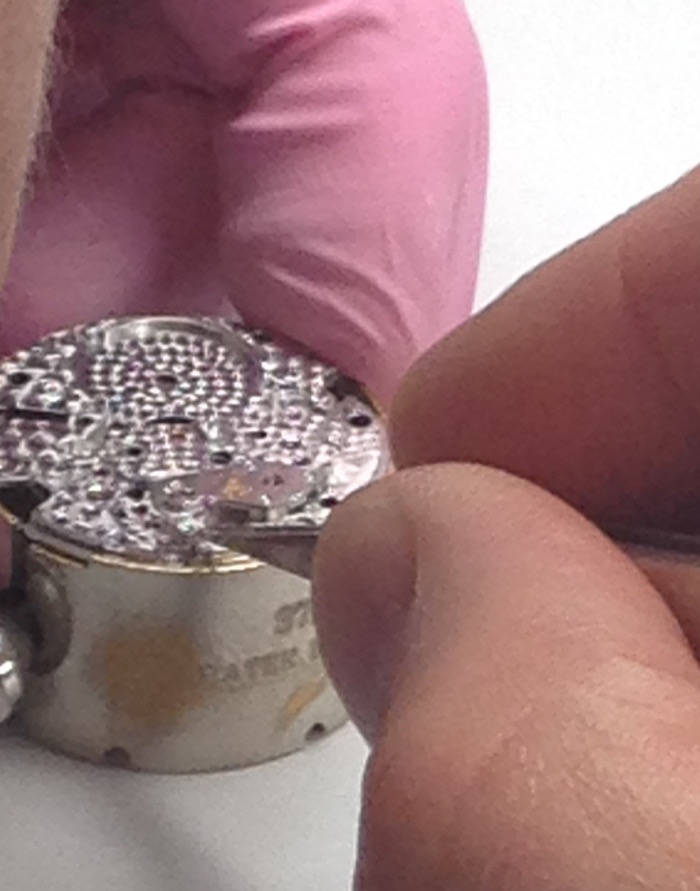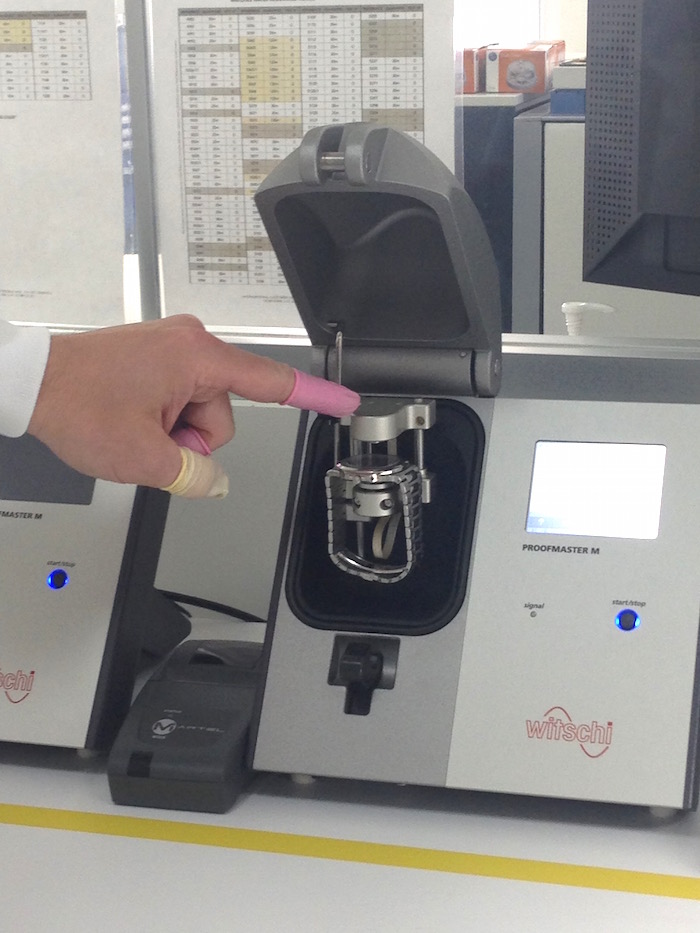Just the other day, I had the unique experience of spending an entire day at a workshop with Patek Philippe in New York. There, we experienced a very thorough presentation of the brand’s pioneering research in silicium, and the material’s evolution as a balance wheel and as a hair spring. It is astonishing to see that in just about a decade, the brand has evolved not only the materials and technology, but also the parts for which that it utilizes Silinvar(R) and oxidized Silinvar(R).
Following an enlightening training session, we were able to actually try our hand at working with the Silinvar spring and balance wheel- trying to assemble it — complete with getting those tiny feet in place — and place it onto a movement. This was no easy feat. There were five of us in the room, and each of us faced different challenges. I had no problem coupling the spring to the balance, or getting the tiny screws into place. It was getting the feet into position that was the most trying portion for me. Others had difficulty with the coupling,a s well as the placement of the pieces onto the movement. Naturally, the exercise not only familiarized us with the material, but also gave us a greater appreciation for the men and women who do this work daily.
The opportunity, however, was incredible. While I have taken movement assembly courses, tried my hand at setting tiny rubies into a caliber and hand-painting a dial –this was easily one of the more unique experiences ever. I mean, how many non-watchmakers can say they have gotten to work with this relatively modern technology and material?
Additionally, we had the opportunity to tour the brand’s state-of-the-art workshops in New York, and try our hand at inspecting final watches that have been through the repair process and are ready to be returned to customers. We had six watches presented to us, along with a thorough run down of the quality control of a Patek Phlilppe watch that has been sent in for repair. Of the six watches, our group was told that two had an “issue” with either lint or the case. Even with such specific details, not one of us in the group of true veteran journalists could find the two “issues.” In fact, when revealed to us, we still had a little difficulty seeing it — thereby giving greater respect to the team that checks every Patek Philippe watch that comes in for servicing before returning it. So stringent are the tests and the guidelines that the quality control checks alone — after the service has been made by the watchmaker on the watch — can take as long as 10 to 30 days. It is truly an eye-opener to see and to gain a better insight into exactly what it is that makes this benchmark brand so successful.








